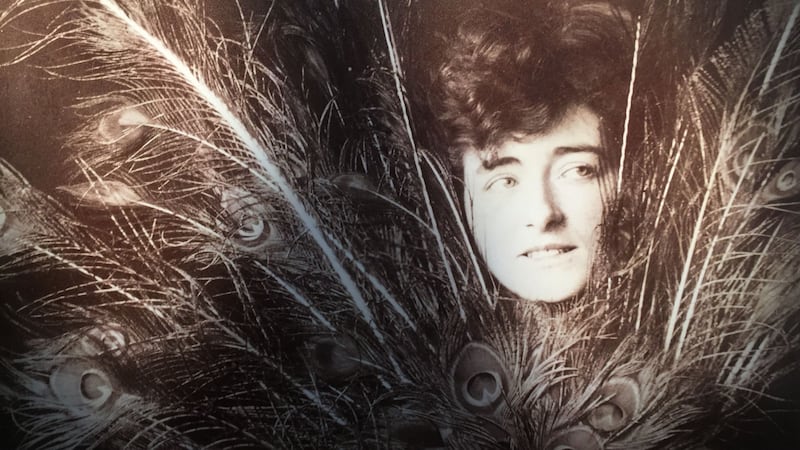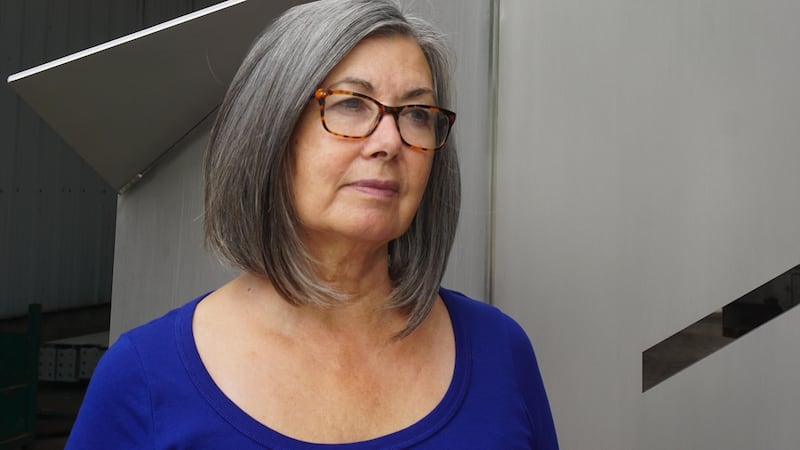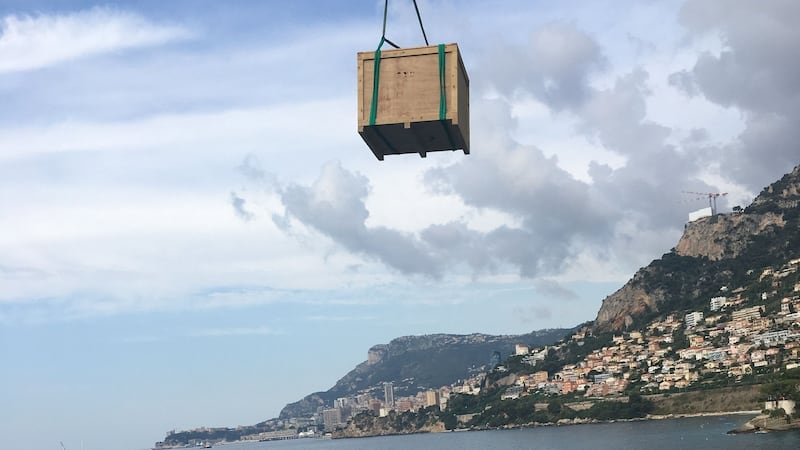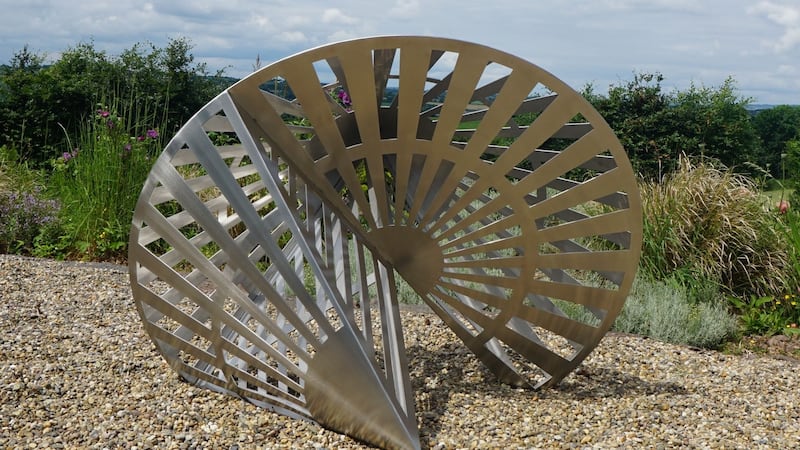Summer 1926. The Irish designer Eileen Gray, age 48, begins work on a holiday dream home for her lover, the Romanian art critic and architect Jean Badovici, age 33. Gray has purchased a terrace on a cliffside above the Mediterranean which is inaccessible by road. For the next three years, she stocks building materials at the railway warehouse which is today a museum dedicated to her work. Everything must be carried to the site by wheelbarrow or on the back of a donkey.
Gray and Badovici name the villa E1027, a code for their intials. The name is reminiscent of a ship’s registry, in keeping with the villa’s nautical theme. The walkway to the front door could be a gangplank. Tarpaulins and a lifebuoy are strapped to the railings. Sitting in the living room of E1027 feels like being on the deck of a ship.
Gray designed the house with infinite attention to detail. On the hottest of summer days, cool air wafts through the open floor plan because of the way she positioned the windows. Light was Gray’s other priority. The sun follows the house’s inhabitants, from the bedroom in the morning to the living room in the afternoon.
Gray's original blueprint is the 'bible' for the restoration, Likierman says
Gray’s work at E1027 was highly acclaimed. She then fell into relative obsurity and the villa was often mistakenly accredited to the Swiss architect Le Corbusier.
"She was a woman. She was a foreigner. She was a modernist designer," Patrick T Murphy, director of the Royal Hibernian Academy, explains. "The interest in her over the last three decades has been well-warranted, and she is looking better and better as we go into the 21st century."

The Cap Moderne association began restoring E1027 in 2014. It is open to visitors from April until October, then closes through the winter while restoration continues.
Michael Likierman, a retired British businessman and the president of Cap Moderne, is trying to raise €1 million to complete the restoration by 2020; €4 million has already been spent. "The first half of the money was to save it from collapse, because it was literally falling into the sea," Likierman says. "To save it was easier than to finish it."
Gray’s original blueprint is the “bible” for the restoration, Likierman says. Aram, a maker of modern furniture in London, has provided replicas of the original furniture, including the famous Bibendum chair, named after the Michelin tyre man and composed of stacked, semi-circular rolls on a steel tube structure, and the Transat chair, made from suspended, flexible leather and a geometric frame of varnished wood.

Exhibitions
Likierman holds fundraising dinners on the terrace at E1027, timed to coincide with fireworks across the bay in Monaco. Because the principality is so close and because his mother, Grace Kelly, was of Irish origin, Prince Albert agreed to head Cap Moderne's fundraising committee. On September 11th, he and Ireland's Ambassador to France Patricia O'Brien will inaugurate two sculpture exhibitions by the Irish artist Eilís O'Connell, on the terraces of E1027 and at the nearby park in Roquebrune.
The former U2 manager and television producer Paul McGuinness and his wife, the publisher Kathy Gilfillan, donated to the project and served as a bridge to the artistic community in Ireland.
Likierman commissioned a bust of Eileen Gray from the Dublin-based artist Vera Klute. It will be added to a colonnade of busts of famous people in Roquebrune. Next year, a bust of William Butler Yeats, who died in Roquebrune, will be added to the collection.
Murphy suggested that O’Connell would be the most suitable contemporary Irish artist to exhibit at Gray’s villa because the Derry-born artist “has a similar excitement about material and a similar elegance in design”.
Gray’s work with metal furniture was what first attracted O’Connell. “I learned to weld at age 18,” explains O’Connell (65). “The whole world is made of steel. I tried working in plaster and clay and it was a disaster because everything just falls apart. You need an armature [a framework] first.”
Four of O’Connell’s six works at E1017 are made of stainless steel. The other two are cast bronze. And four of the five large sculptures which O’Connell will show in the park at Roquebrune are also made of laser-cut, fuse-welded stainless steel.
The six sculptures at E1027 were carried by truck from Cork to a parking lot in nearby Menton, where they were picked up by helicopter and dropped on to the terraces of E1027. O’Connell watched the drop.

"It was nerve wracking, crazy, totally insane," she laughs. She says she could not have done the exhibition without Culture Ireland, the State agency, which paid for the transport of her sculptures. Carapace, a steel cone with steel cable woven through its frame, looks like a seashell to me. O'Connell insists it is "pure geometry". A larger version of the same scupture can be seen at 5 Harcourt Street in Dublin.

Quarter Drop Cone is the frame of a cone split open. "Before, I would cut out shapes with oxy acetylene myself, which is really hard work," O'Connell says. "With a laser cutter, it's fantastic. Everything has to be drawn up and programmed into a computer. Once the laser cutters do it, it's perfect. You just have to file the edges down."
Gray mastered working in metal long before O’Connell was born. She encased a dressing cabinet, the top of a dresser and the side of a bathtub in E1027 in polished aluminium. Her tubular metal furniture required basic gas welding, O’Connell says. “Eileen Gray had to work with her craftspeople, which I think is great. She had to know how they worked the steel, how thick steel can be, how light it can be.”
Story
Every O'Connell sculpture has a story. Air, a basket-like sculpture on the terrace at E1027, started as an elliptical hoop shaped by a Mr Bendbow in London. "His family were wheel-makers. He had this ancient machine that could bend a straight bar into a perfect circle." O'Connell ordered dozens of curves from Mr Bendbow. She fashioned the rest of Air from remnants of a laser-cut gate she designed for Dublin.
When Le Corbusier painted garish murals on the walls of E1027, Gray felt her work had been vandalised
O'Connell's art, like Gray's, ranges from the whimsical to the coldly scientific. In her earlier, art deco phase, Gray's chairs featured dragons and mermaids. She made a laquered screen titled Destiny, on which antique figures chase a ghost.
In an earlier Found/Given series, O'Connell encased such things as a bird's nest and a piece of coral in translucent resin. Though it is on a much greater scale, O'Connell's Atlantic Oak, on exhibit at E1027, started with a similar feeling. "Sometimes I find things that I want to keep forever," she explains.
During a residency in Co Mayo, O'Connell and fellow artists went around the islands of Clew Bay in a boat. In a disintegrating boat builder's yard, she found "the most incredible piece of wood". The boatmaker had left the wood in the sea to season it, and forgot it for 33 years. "He only rediscovered it when the tide went way out. It had this amazing pattern of erosion, different on the sea bed side to the wave side."
O’Connell took the wood to her studio and dried it for two years. “This is the first time that I have interfered so little with a found object,” she says. “It was just gorgeous and I decided to cast it in bronze. I knew it would look like petrified wood and it would last forever.”
When Le Corbusier painted garish murals on the walls of E1027, Gray felt her work had been vandalised. O'Connell felt similar outrage at the treatment of her Great Wall of Kinsale, a public art commission for the Cork town which she completed in 1988. It was her worst experience as a sculptor.
“It wasn’t as bad as what Le Corbusier did to Eileen Gray,” O’Connell says. “Just ignorance, and really bad town politics. No respect. They cut a section out of it to make a bus stop. They put red railings around it. There were old beer barrel pots, red, with flowers in them. You have no idea. I disowned it a long time ago.”
As a result of her Great Wall experience, O'Connell moved to London for 17 years. Ironically, images of the wall before it was spoiled opened doors for her in Britain, where she developed a following among landed gentry and big corporations with a taste for large-scale sculpture like the pieces O'Connell will show in the park at Roquebrune. Her largest creation, a bridge in Bristol, is 54 metres long.













